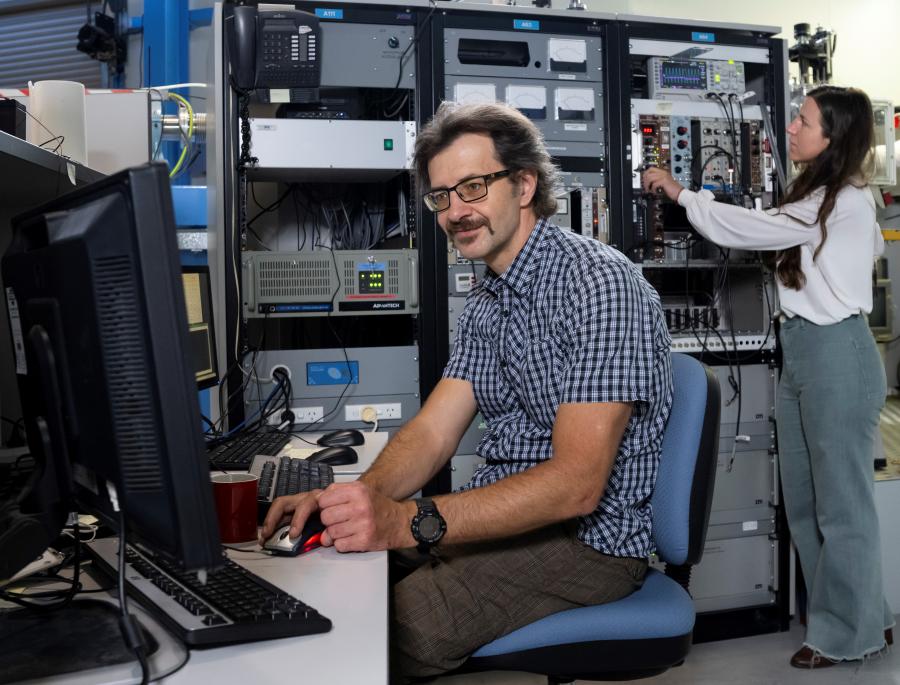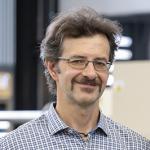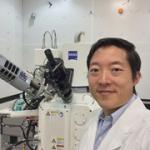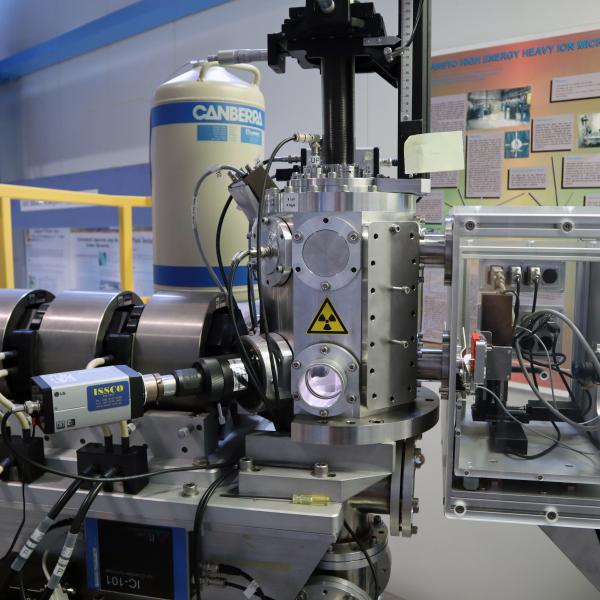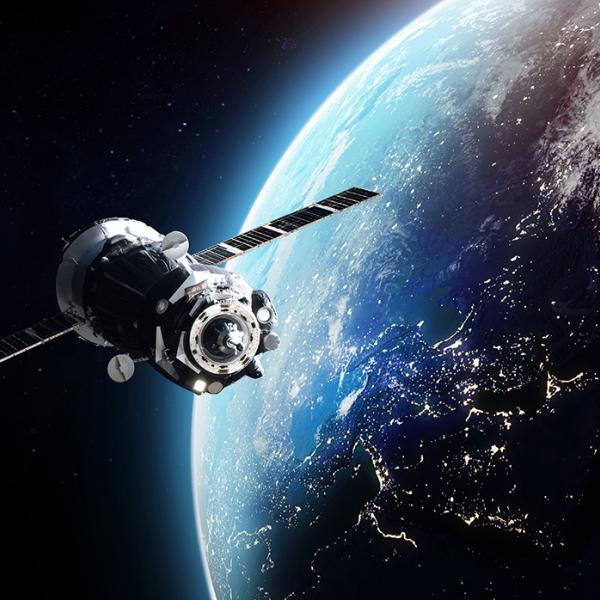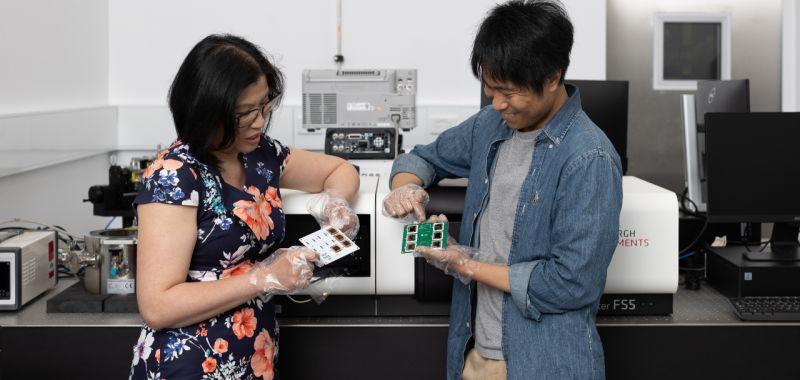
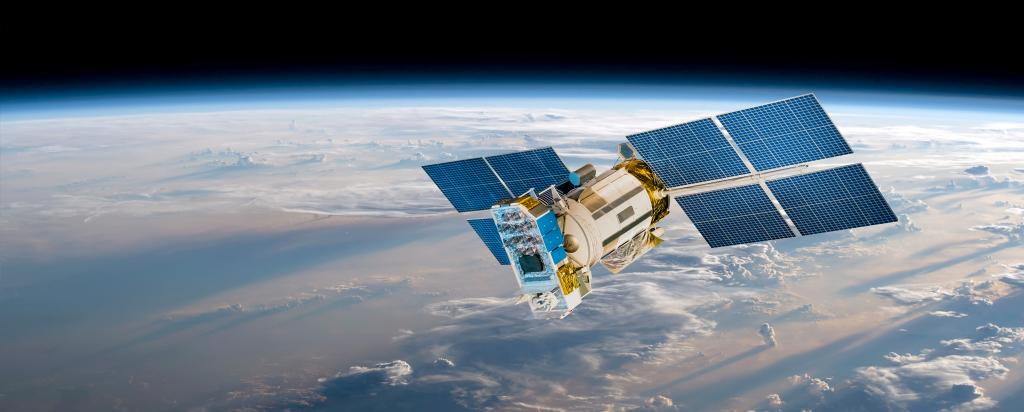
Published on the 4th August 2023 by ANSTO Staff
Key Points
-
Research from the ARC Centre of Excellence in Exciton Science has found that very thin perovskite solar cells damaged by proton irradiation in the low-earth orbit can recover up to 100% of their original efficiency through annealing in the thermal vacuum of space
-
Light-weight radiation-hard organometal halide perovskite solar cells are a strong candidate for powering low-cost space hardware thanks to their low manufacturing cost, high efficiency and radiation hardness
-
The solar cells were irradiated with protons on the high energy heavy ion microprobe beamline at the Centre for Accelerator Science to simulate the effects of high energy ion radiation in space
Researchers developing new materials and devices that can withstand the harsh radiation environment in space are using the unique ANSTO’s capability to simulate the effects of high-energy ion irradiation on the properties and performance of these materials and devices.
“The Centre for Accelerator Science has a unique research instrument, the high energy heavy ion microprobe, which together with the ANTARES accelerator creates a 30m long microscope, for high-precision irradiation of electronic components, integrated circuits and systems, as well as thin biological samples, like human cells for an evaluation of the impacts of radiation,” said Leader Dr Ceri Brenner.
Proton irradiation at specific energy levels achievable in a laboratory environment penetrates into a target and mimics the effects of radiation exposure in space. The radiation dose is equivalent to irradiation in space and delivered in minutes compared to years.
In this study, Australian researchers, led by Professor Anita Ho-Baillie, who is the John Hooke Chair of Nanoscience at the School of Physics in the University of Sydney, and an Associate Investigator with the ARC Centre of Excellence in Exciton Science, demonstrated that very thin perovskite solar cell damaged by proton irradiation in the low-earth orbit can recover up to 100% of their original efficiency through annealing in the thermal vacuum of space.
The improvement in radiation hardness, reported in the journal Advanced Energy Materials, is achieved through careful design of the hole transport material (HTM), which is used to transport photo-generated positive charges to the electrode in the cell.
The journal Advanced Energy Materials has an impact factor of 29.7.
Light-weight radiation-hard organometal halide perovskite solar cells (PSCs) are a strong candidate for powering low-cost space hardware thanks to their low manufacturing cost, high efficiency and radiation hardness.
To take advantage of high power-to-weight ratios, ultrathin radiation-resistant and optically transparent sapphire substrates of 0.175mm were used by the team for the fabrication of the solar cells at the University of Sydney prior to testing.
ANSTO scientist and co-author, Dr Alan Xu, undertook the preliminary simulation of the damage that the protons would have induced in the cells to identify the minimum energy required to observe damage.
“This information was provided to us to select the appropriate energy on the ANTARES. We identified a radiation environment scenario, for example, in the Van Allen Belts or low Earth orbit for tens to hundreds of years. Then we calculated the fluence for this type of energy, for, let's say a one-year mission,” explained Accelerator beamline scientist Dr Stefania Peracchi, a co-author on the paper.
The cells were exposed to a rapid scanning pencil beam of seven mega-electron-volts (MeV) protons.
“We delivered this information to Anita and the team saying, look, if your solar cell stayed for a year in these different orbits, you’ll get this fluence or number of particles.”
“This approach is known as an implantation irradiation because you implant defects in a material and see what happens,” said Dr Peracchi.
Senior research physicist Dr Zeljko Pastuovic, also a co-author and an expert in accelerator physics and ion beam interactions and modifications of matter, said the choice of material and dopants was extremely interesting and demonstrated how molecular changes could improve properties.
“We hope that the insights generated by this work will help future efforts in developing low-cost light-weight solar cells for future space applications,” Professor Ho-Baillie said.
Adapted from media information provided by the research team.
Read more on the Centre of Excellence in Exciton Science website.
DOI: https://doi.org/10.1002/aenm.202300506
